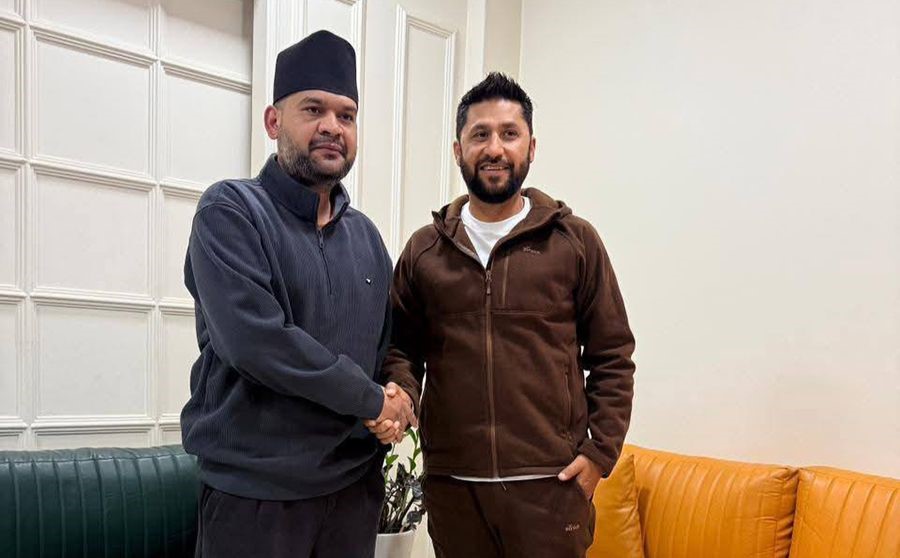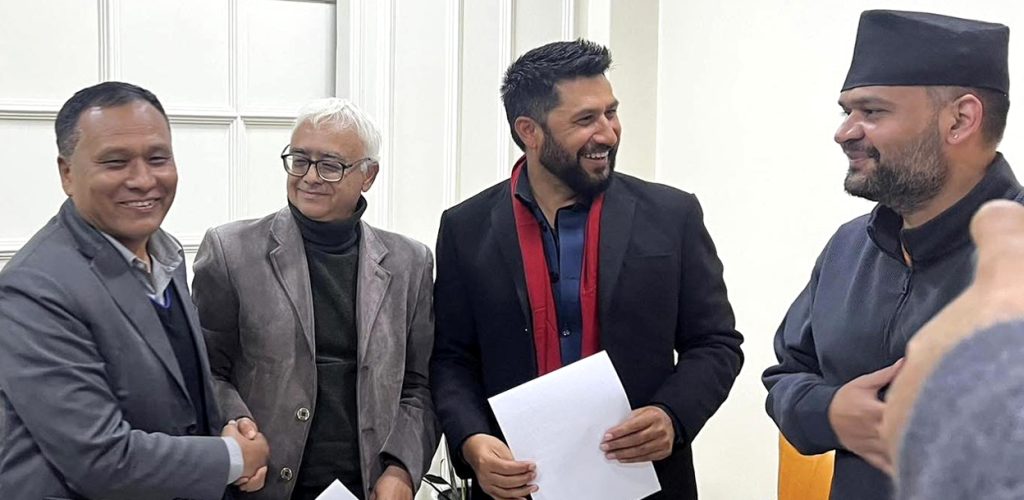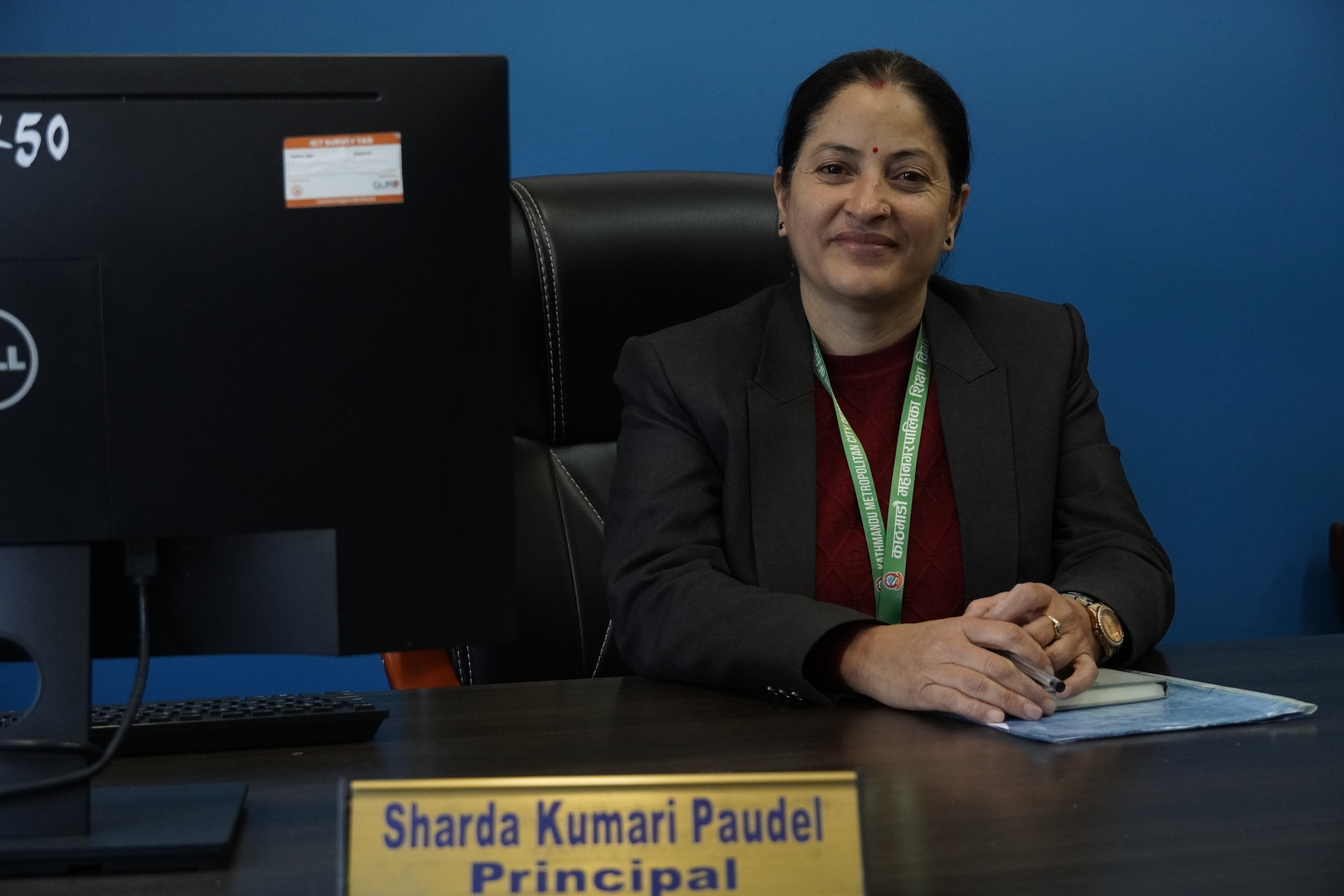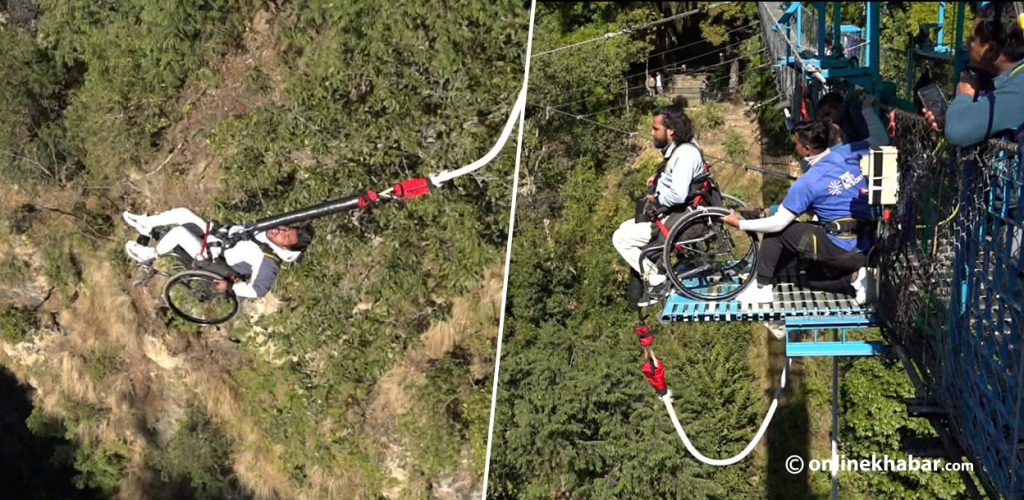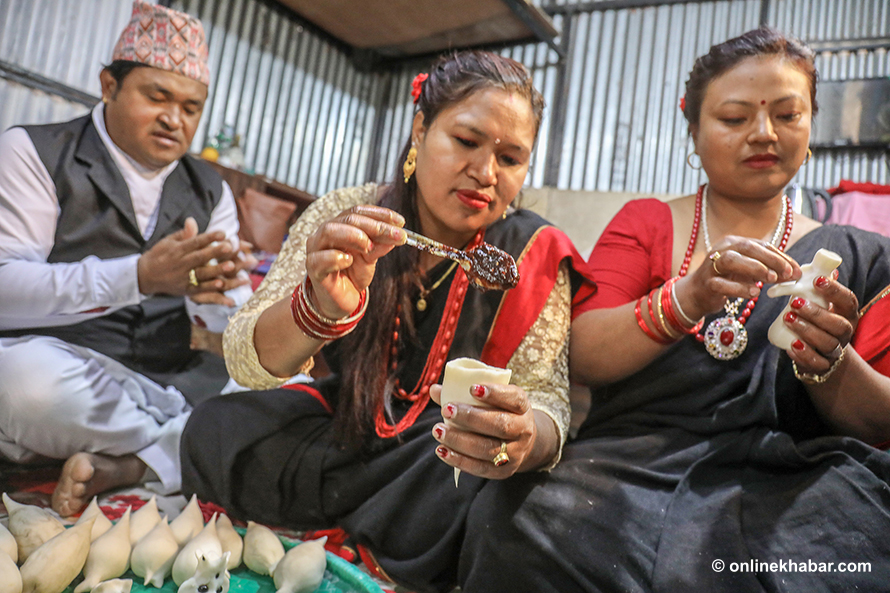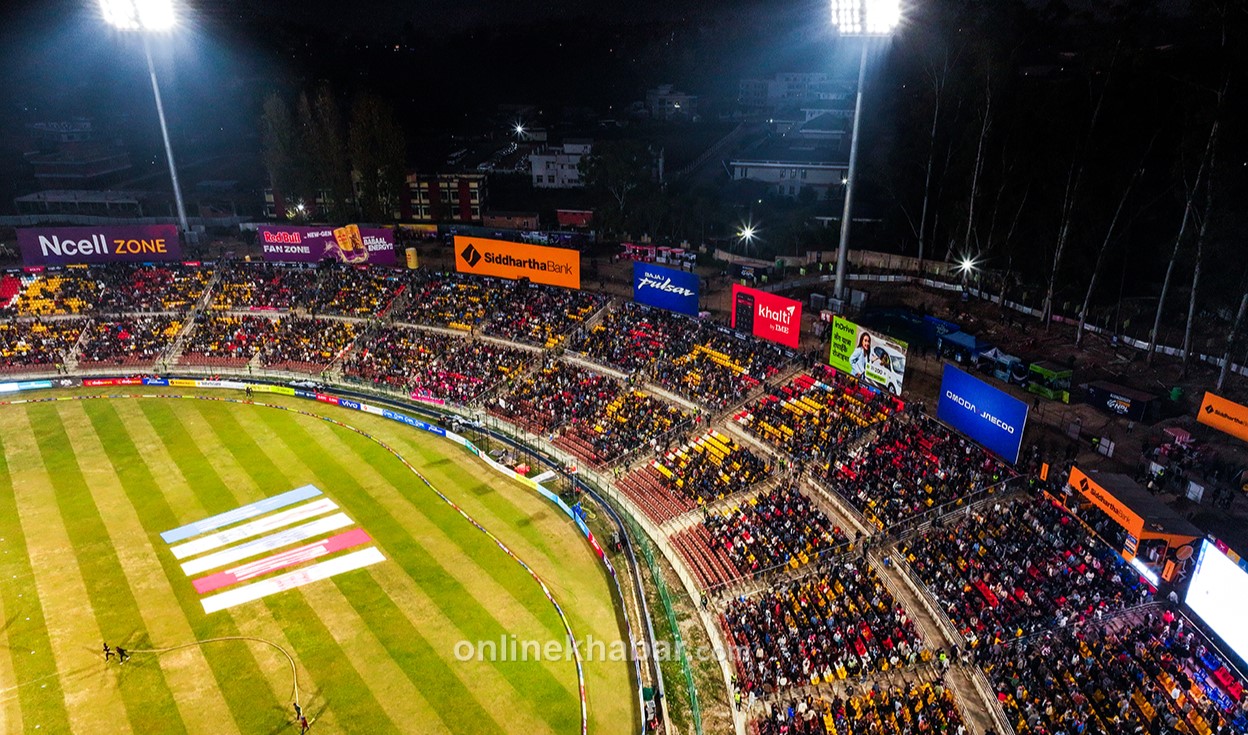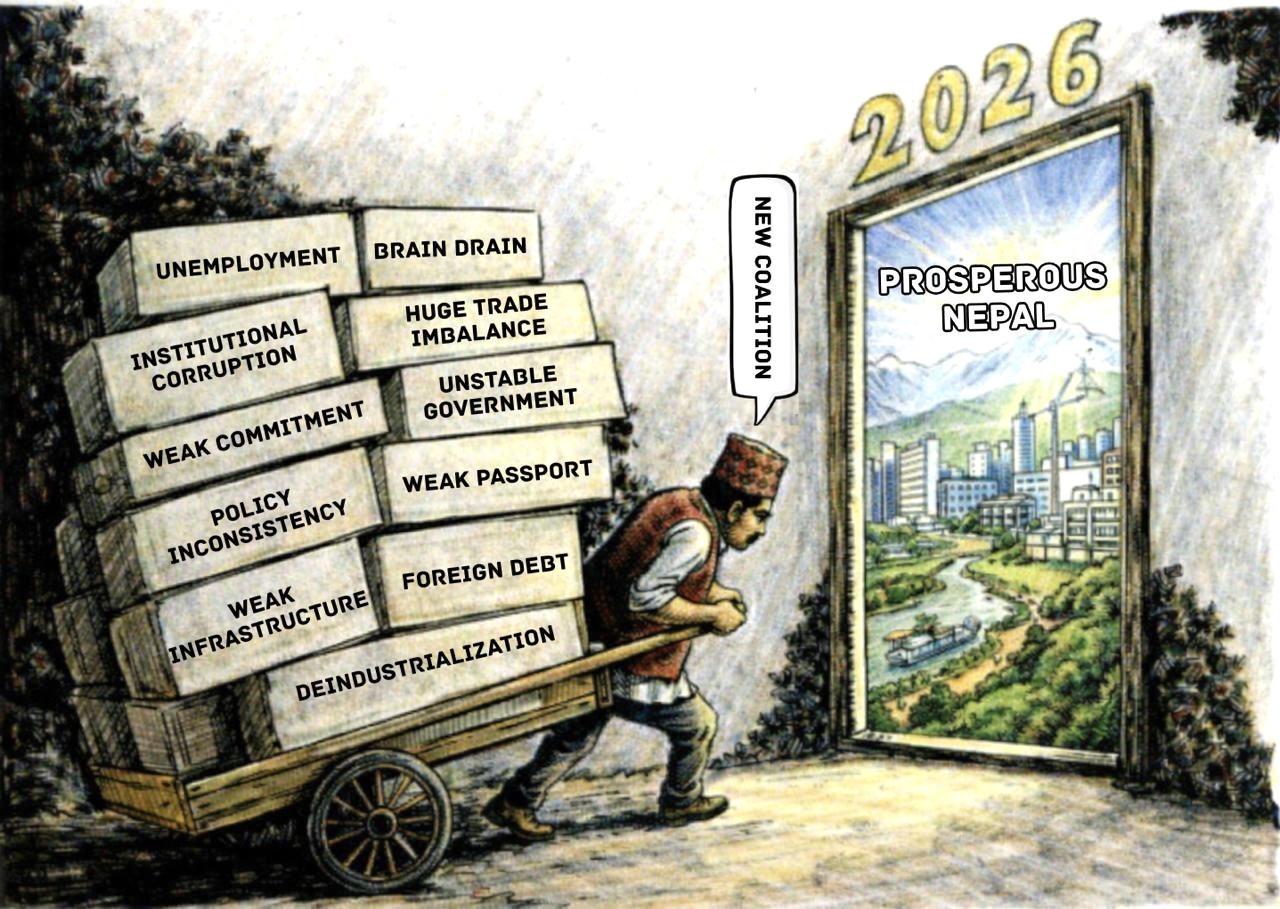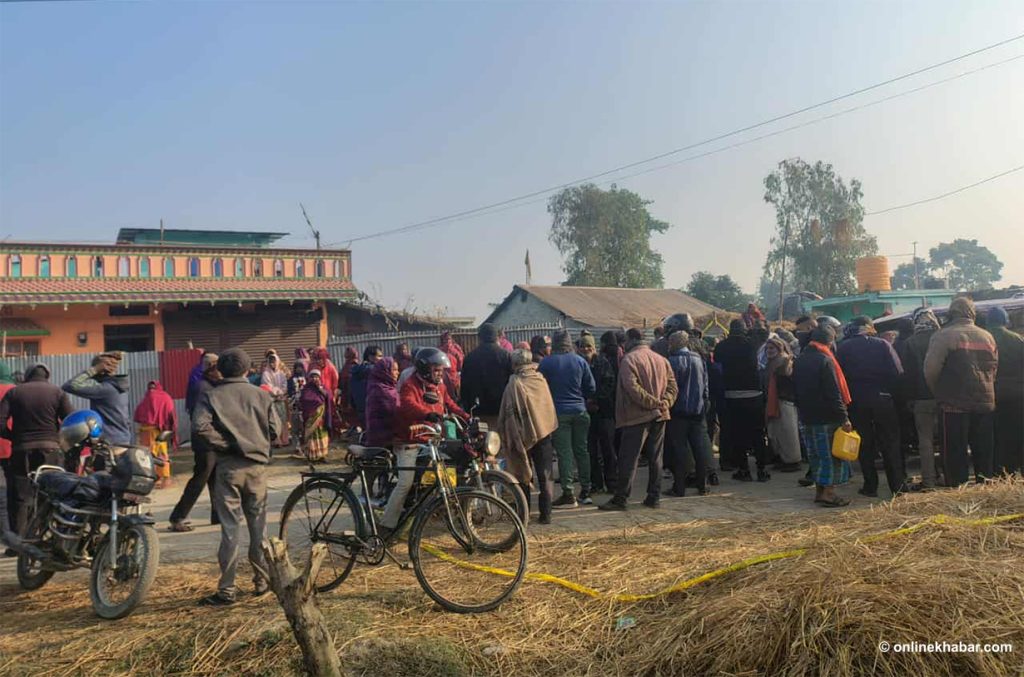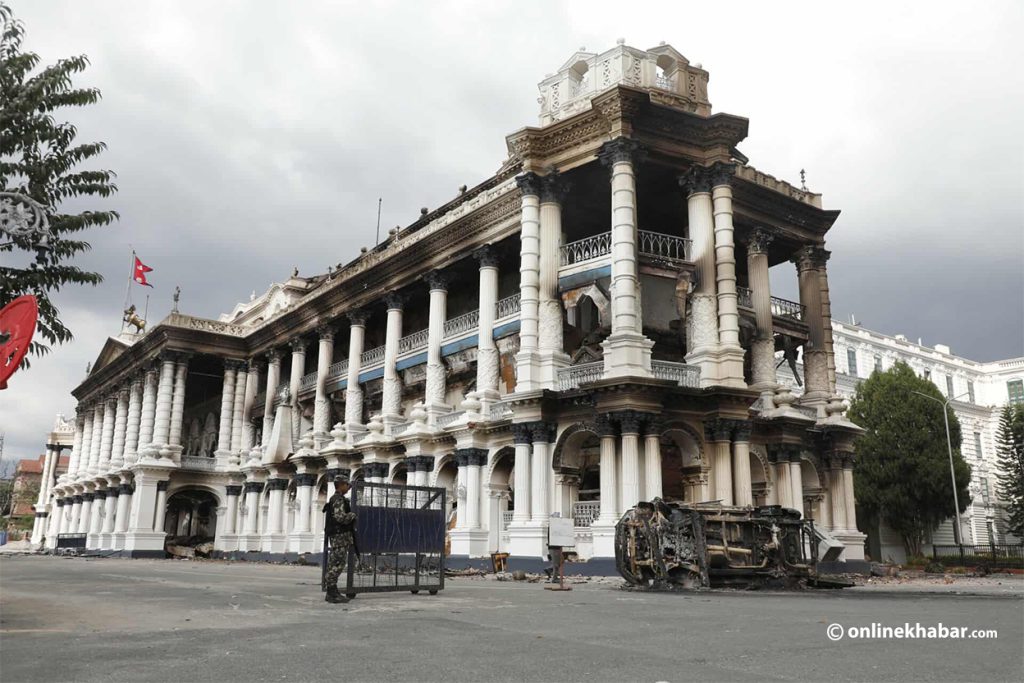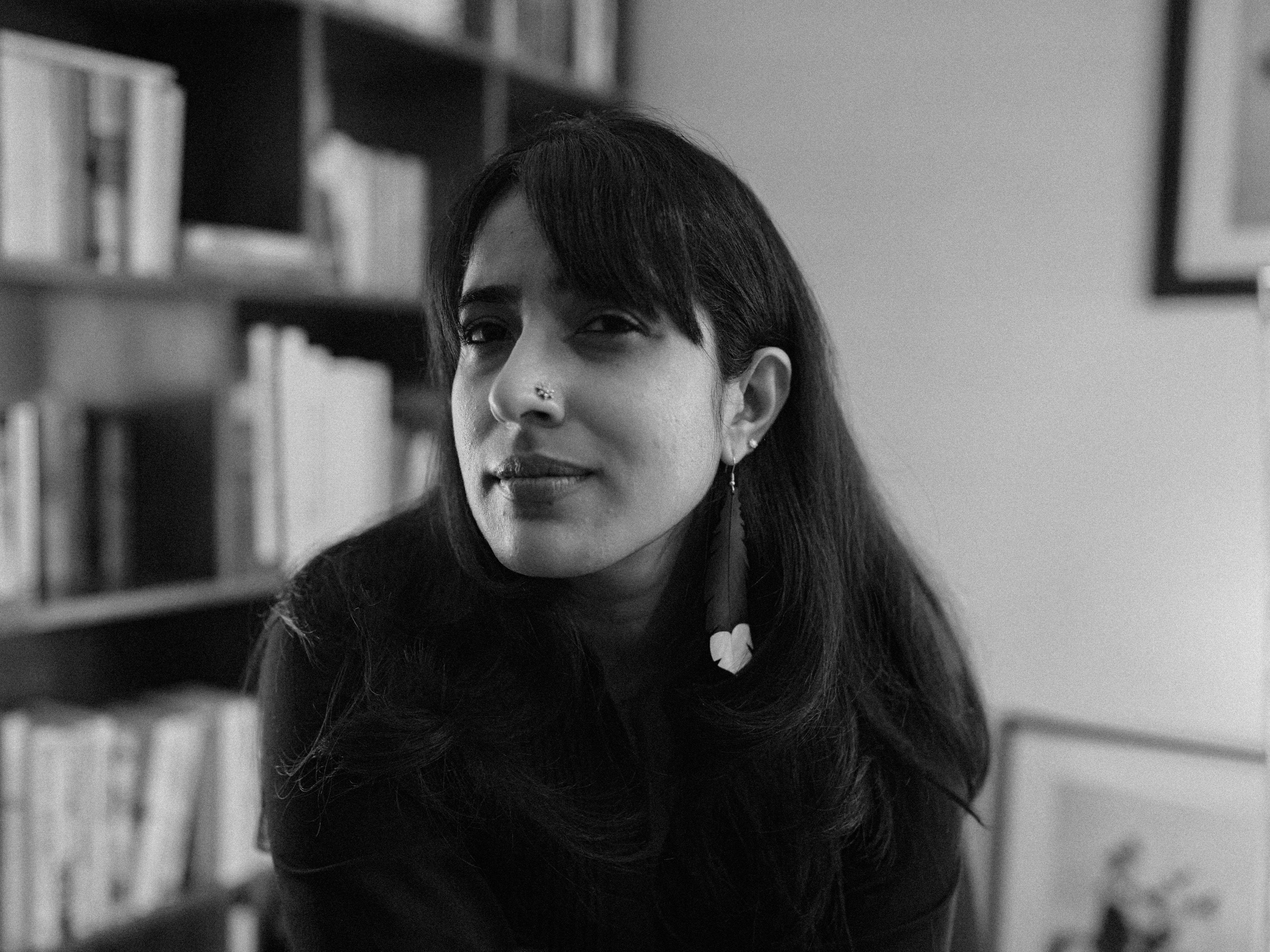
Award-winning Indian filmmaker Rintu Thomas, best known for her Oscar-nominated documentary Writing with Fire, recently visited Nepal as a mentor for the Kathmandu Doc Lab, held from May 24–28. Known for her profound storytelling and commitment to empowering voices from the margins, Thomas brought her years of experience to guide nine emerging filmmakers from across South Asia during the intensive lab.
In an interview with Onlinekhabar, Thomas reflects on her time mentoring in Nepal, the power of regional collaboration, and the evolving landscape of documentary filmmaking in South Asia. Thomas also shares insights into the making of Writing with Fire, the significance of storytelling rooted in lived realities, her thoughts on artificial intelligence in filmmaking, and what’s next in her creative journey.
Excerpt:
Since you are here for the Kathmandu Doc Lab to mentor filmmakers, now that the doc lab has concluded, how would you describe your overall experience mentoring nine filmmakers from different countries?
I have mentored filmmakers many times before, but this experience was quite different because it was my first time with filmmakers from Pakistan and Nepal.
It was a rare and valuable opportunity to listen to their projects and understand what these filmmakers are trying to express about modern life in their countries. It has been an intense experience.
For a couple of days, our sessions would start at 9:00 a.m. and go on until 6:00 p.m. There were nine projects—each one very different from the others.
In a lab setting, our focus as mentors is usually to help filmmakers uncover their connection or motivation behind the story they want to tell and bring out their unique artistic voice.
There is confusion, there is chaos, there is frustration—and then there is also this emergence of clarity and light. The entire process is very special.
So yes, I have had a really good time.
How were the projects? Did you find them interesting?
It was a really good mix of projects, ranging from personal explorations of identity to lesser-known historical events. One such project was An Eventual Calamity of Time by Indian filmmaker Omkar Khandagale, who explores his caste identity through the story of his family. Another was by Nepali filmmaker Bunu Dhungana, who examines a lesser-known yet historically significant event—the communist revolt in Nepal—through the lens of friendship. Then there is Mahera Omar, a filmmaker from Pakistan, who looks at the city of Karachi and its air pollution, but does so by portraying it through different lives within the city, using a light and entertaining approach.
As a filmmaker, what do you think is the significance of a platform like the Kathmandu Doc Lab for emerging filmmakers?
It is like giving someone water in a desert—it’s that vital. A platform like the Kathmandu Doc Lab creates a strong sense of community among filmmakers. In fact, there are only three other labs in the entire South Asian region: DocedgeKolkata in India, Dhaka DocLab in Bangladesh and Doc Producing South.
I also co-founded a lab in India with Sushmit Ghosh called the Himalayan Story Lab, which is dedicated to filmmakers from the Himalayan region. We started it two years ago, initially focusing on the Indian Himalayan region, and this year, we are expanding it to include Nepal and Bhutan.
So, these are the only kinds of documentary labs that exist in this region, and the one in Kathmandu is a phenomenal presence. They have done something very special here. Often, when labs are organised, the mentors are brought in from outside the region. While that has its advantages, it also comes with drawbacks—for example, we constantly have to explain our context to them, and they may not find our realities particularly relevant. But I truly believe there is enough knowledge and expertise within South Asia itself.
Now let’s talk about your film Writing with Fire, which tells the story of Khabar Lahariya, a Dalit women-led media organisation, and was nominated for an Oscar. You have already shared the inspiration behind the film in previous interviews, so without repeating that, could you reflect on the overall journey of receiving the Oscar nomination?
Writing with Fire, a film about a newsroom led by Dalit women, was created in a very small and intimate way. It was really just the three of us who shot the film over four years. My co-director and cinematographer, Sushmit Ghosh, also produced and edited the film with me. The third person on our team was Karan, who served as the second cinematographer. We worked incredibly hard. For a feature-length documentary, it was an unusually small crew. From the beginning, Writing with Fire was imagined as a modest project.
But when the film premiered at Sundance and won two awards—something no Indian film had done before—we realised that it was resonating with a global audience. We were confident it would connect with people in India, but we were not sure if international audiences would understand the nuances of what it means to be a Dalit woman. The film explores complex themes like democracy, caste, class, media, and gender, so we had our doubts about whether the global audience would truly get it.
After Sundance, we felt a strong sense of responsibility to make sure the film was seen widely. But it was during the COVID-19 pandemic, and we could not travel for about eight months. During that time, we participated in around 200 virtual Q&A sessions. Each session came from a genuine desire to take the documentary to as many people and places as possible.
The film then went on to screen at both large and small festivals. We also held screenings at journalism schools that reached out to us. Essentially, we made the film available to anyone who wanted to watch it. Over the next eight or nine months, a powerful momentum began to build.
We finally had an in-person screening at the International Documentary Film Festival Amsterdam (IDFA) once restrictions eased a bit. We brought Meera, the central character of the film, with us. It was the first time we all watched the film with a live audience—and it was incredibly powerful. When Meera came on stage, the entire audience stood up, phones in hand, and she pulled out her camera to record them in return. It was such a beautiful moment. The film ended up winning the Audience Award there.
Now, to run an Oscar campaign, you typically need a lot of money—it is a very American system. We did not have that kind of funding. But what we did have was love. So many people—festival programmers, audiences, Academy voters—were sharing the film, recommending it to others, and saying, “This needs to be seen.”
The film had a theatrical release in the U.S., which was great, but not quite enough. So, for us, the Oscar nomination meant the whole world now knew about the film and would watch it. And that is exactly what happened.
It was incredibly difficult to run the campaign without financial resources. But that is the amazing thing about South Asians, right? Even if we do not have the resources, we always find some jugaad. And that is what we did. It was a very special journey. The film continues to be watched and continues to be programmed
In the future, would you be interested in following up on the story of Khabar Lahariya?
I think when we started making the film, Khabar Lahariya was at a very important turning point—transitioning from traditional journalism to multimedia journalism. I don’t think even they fully realised at the time just how historic that shift was. We were literally there in the moment when they were making that decision, and yet there was a lot of uncertainty. Some months, they struggled just to pay salaries.
At one point, we even contributed to help the team buy phones because their situation was so dire. Seeing where they are now brings me so much joy. They have a bigger office in Delhi, they’ve expanded into three states, they have global collaborations, and they’ve launched a for-profit production company. They’re investing in better technology and growing their teams.
They’ve become what they once only dreamed of. I remember how they used to say, “Nobody understands our work. Nobody cares about this.” Funders would ask, “What’s the impact of your work?”
What our film did was to shine a light on their efforts, and that helped bring in more visibility and collaborations.
But I think, for me, the focus was never just on the growth of the organisation. What truly moved me was the spirit of these ordinary women. I feel like I’ve done my part in telling their story. Now it’s their journey, and they’ll continue to grow.
I still remember when they hit one million views on YouTube—they threw a party and we were all so happy. Those kinds of milestones will keep happening as their lives move forward. And I feel my job is done.
Now, I want to explore and experiment more with the documentary form. Writing with Fire was made as an observational documentary, and I think we did a good job with it.
Most often, when someone tries to make a documentary, the biggest challenge is funding. In that regard, how have you managed to overcome this issue? And what advice would you give to aspiring filmmakers on navigating funding challenges?
That is the most difficult question. I have been making documentaries for the past 15 years, and I still do not have a clear answer, mainly because of the state of the industry we are working in. In most of our countries, there is not really a documentary film industry. So, we often have to look to the West, where such an industry exists and where funding opportunities are more established, which is truly a blessing.
Filmmakers before us did not have access to those funds. What’s missing in our region is awareness and knowledge about these funding opportunities. When we were making Writing with Fire, we did not know anyone familiar with existing funds or the process of writing proposals. We learned everything on the job through trial and error, and many rejections.
Because of that experience, filmmakers like me have figured out parts of the process. And now, we feel a strong desire to share that knowledge quickly, so the next generation of filmmakers does not have to spend 15 years figuring out how to apply for grants, make teasers, or talk about their films.
But again, in my country, there is no state funding, no private funding, and no incubation spaces for documentary filmmakers. One way we have managed to overcome the funding challenge is by doing other kinds of work alongside our creative projects.
Sushmit and I started a film production company in Delhi called Black Ticket Films in 2009. Our dream was to make documentaries “cool”—to get people lining up to watch them. That is actually why we called it Black Ticket Films—like a movie that is so popular you need a black market ticket to get in. And in some ways, we have achieved that.
So, what we did was take on a lot of commissioned work. Fortunately, the kind of work we were offered was also work we cared about. That is what kept our office and our homes running. At the same time, we always set aside a portion of our income to invest in making independent documentaries.
We also apply for grants and funding from all over the world. These are really the only two viable paths right now. Ideally, every country should have its documentary fund. Bangladesh, for example, now has a documentary film grant—and a good one. So, if Bangladesh can do it, I am pretty sure India and Nepal can too.
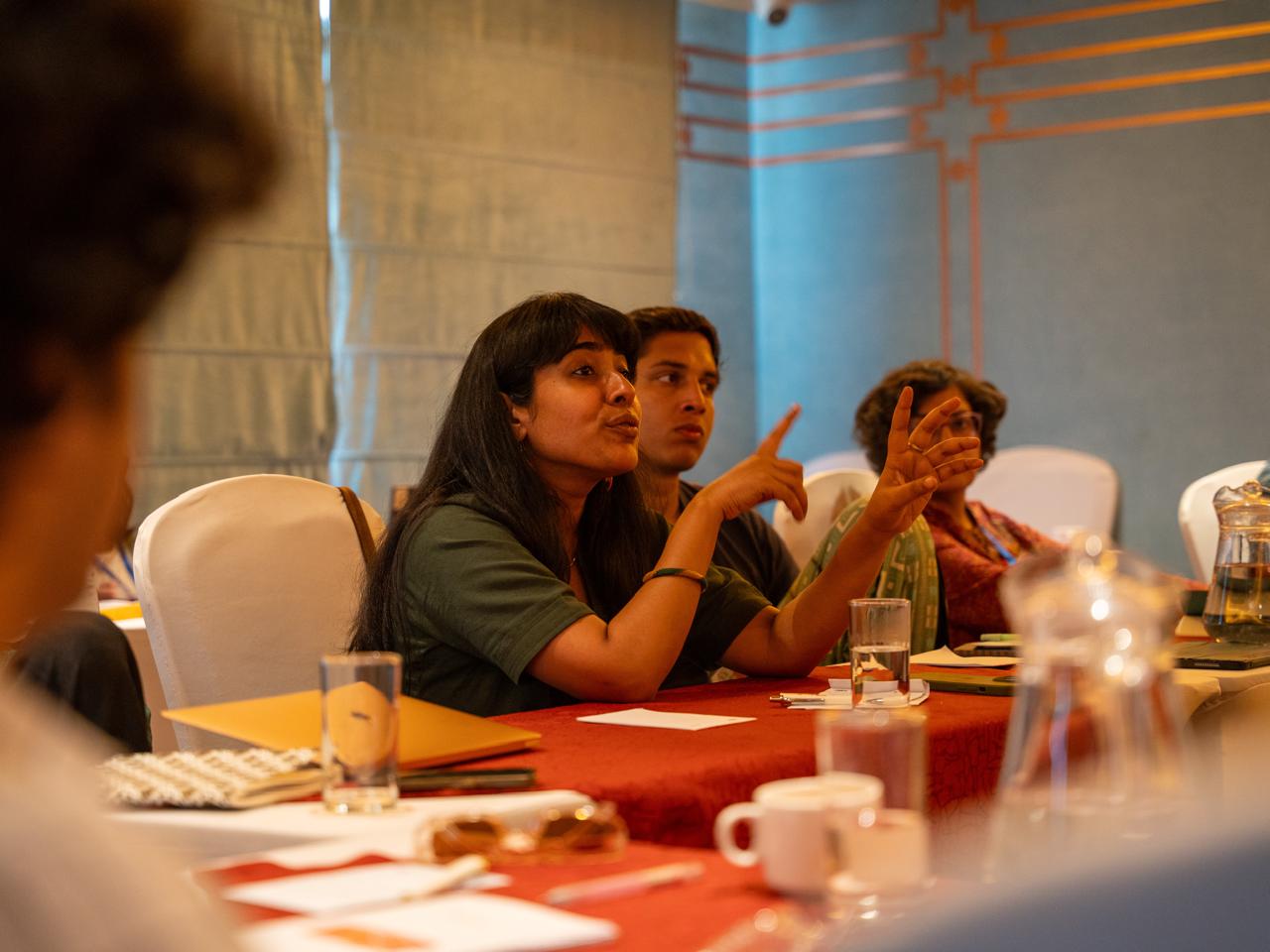
You also have experience working with foreign collaborators. Could you share what that experience has been like for you?
It depends on the capacity with which you are working with foreigners. In terms of creative collaboration, it has been really wonderful because they bring a different perspective. And if it is a good collaboration, you can truly benefit from that fresh viewpoint. Their approach to using technology is often quite different from ours, so it becomes a kind of creative choreography. I really enjoy working with people from different contexts—they bring something unique and valuable to the table.
The challenge arises when they are also the financiers. Some of them have a very fixed idea of what an Indian film should be or look like. And when it comes to editorial control, that can become problematic. Sometimes you have to say no, which is difficult, especially when you know you need the funding to make the film.
That said, I have had a great experience working with sound designers and colourists who are not from our context. You just have to be very careful and intentional about who you choose to collaborate with.
Speaking of collaboration, how do you think South Asian filmmakers can work together more effectively?”
This is the time. For too long, we have all been on our little islands within the region. But now, we have better access to technology, to labs, to the internet, and each other’s cinema. You can simply write to a filmmaker, and they will send you a link to their film. This is truly the moment for us to connect, collaborate, and communicate.
Together, we can build what’s missing in the industry. And I don’t think it’s just an Indian industry or a Nepali industry—it is the South Asian industry that needs this kind of collective effort because there is so much we share. When I watch a film about flooding in southern Bangladesh, it reflects exactly what’s happening in the northeastern part of my own country. There are countless similarities.
There is also an incredible amount of talent in the region—sound recordists, designers, directors, and more. We have the potential to collaborate, co-produce, appear in each other’s films, and become a powerful collective force. And I believe we’ve already started doing that—slowly, but surely. This is the moment to keep moving forward together.
So, if someone wants to collaborate with you, how can they reach out to you, and what kind of skills should they have?”
I think it starts with simply writing to us. A bit of experience is important for the kind of work we do. Earlier, we used to take on a lot of interns and train them, but now we don’t have that kind of time. So, having some prior experience is really important, along with a genuine passion for non-fiction.
If you do not know everything but are eager to learn and are deeply in love with non-fiction, then write to me.
Also, many Indian filmmakers are very approachable. If you write to them, you can often learn about opportunities and ways to get involved.
Nepal does not yet have a presence on major OTT platforms. What would you suggest? How can the country reach that level?
I think it has taken Indian filmmakers a while to get there, and I believe it is only a matter of time for others, too. What was missing for us initially was knowledge—once we figured that out and started sharing it with each other, things began to change.
You know, when one person grows, the entire ecosystem grows. When one Indian film gets nominated, the whole region starts to feel, “I can do it too.” And now, you see so many more films emerging. It is really just a matter of confidence and time.
You have also served as a jury member at various film festivals. As a jury member, what do you look for in a film?
The voice of the film-maker and how the film really speaks to its times. It does not need to be about serious issues. It should speak to the universal kind of human experience in a way that feels original, fresh and powerful.
Lately, the presence of Artificial Intelligence can be seen everywhere, and filmmaking is no exception. How have you been observing the role of AI in filmmaking?
The presence of AI is currently more prominent in fiction than in non-fiction.
Of course, there are films that have experimented with AI, and I am curious to see how people continue to use it. In some ways, it makes tedious tasks easier. For instance, our editor showed us an AI plugin that can now clean up audio in minutes—something that used to take 100 hours.
However, I don’t think AI can replicate the human mind. The human mind is vast, nuanced, and capable of original thought—something AI still cannot do. For example, if I’m making a film about women in Uttar Pradesh running a newspaper, AI can not tell me how to do it from scratch.
But if someone else wants to make a similar film in 2025, AI could analyse Writing with Fire and suggest ideas based on that. So, in essence, it copies and mimics patterns in a way that appears intelligent. But the creative power still lies with us. AI can be a useful assistant, but not a substitute for human creativity.
Lastly, what’s next? What are you working on now?
I am currently working on two feature documentaries, which I am developing and co-directing with Sushmit. The Himalayan Story Lab also takes up a significant amount of our time—it’s designed as a year-long fellowship with three in-person labs in Assam.
Just getting there, selecting the right fellows, inviting filmmakers from different parts of the world to conduct masterclasses, and raising funds to make it all happen is a huge undertaking.
We are also directing two short animated documentaries, which is very exciting because it is a completely new territory for us.
On top of that, I am writing fiction. It is moving slowly—slower than I would like—but it is finally the story I have been wanting to write for a long time. So yes, my plate is quite full.
I come from a very traditional, orthodox Christian family, and my community is both hilarious and frustrating, like many South Asian communities. I have been wanting to tell a story about them for a really long time, especially because of how often I find myself frustrated with them. I want to use humour as a way to tell that story.
It is a completely new process, very different from everything else I am currently doing—but it is something I am genuinely excited about.






